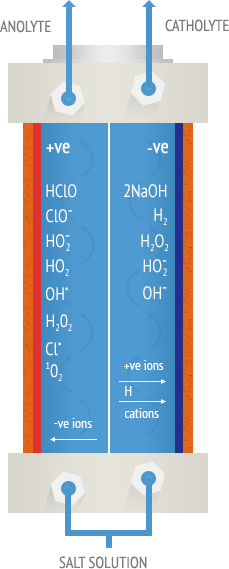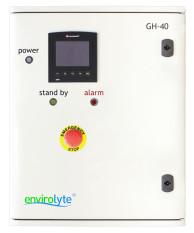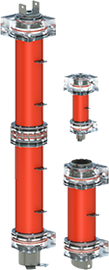A Unique Design for a Unique Process
At the core of the process are the patented diaphragmatic cells that have been designed using innovative and unique technology to effectively deliver electrochemically activated solutions (Anolyte and Catholyte) using a 1-4% water solution of NaCl as initial material.
Unlike other electrolytic cells, a diaphragm separates the Anolyte and Catholyte solutions that are generated respectively at the anode and cathode chambers of the cell. Thus preventing the two streams mixing and inter-reacting to form a simple sodium hypochlorite solution, as it is the case with other electrolytic cells that are commercially available at this time.
The Envirolyte cells are manufactured with variable Anolyte output capacity ranging from 20L to 1200L per hour of Anolyte out one cell. Combination of cells allows to main facture Envirolyte units with output capacity up to 6000LPH.
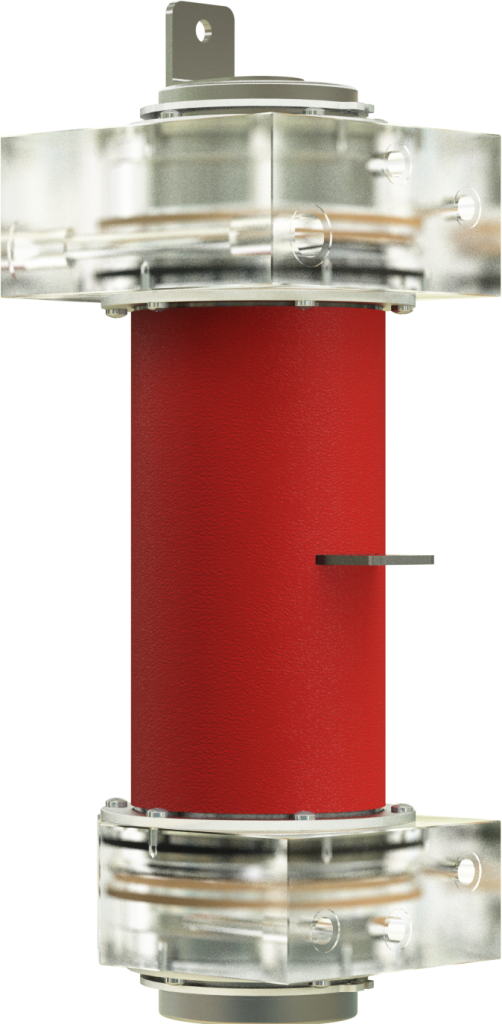
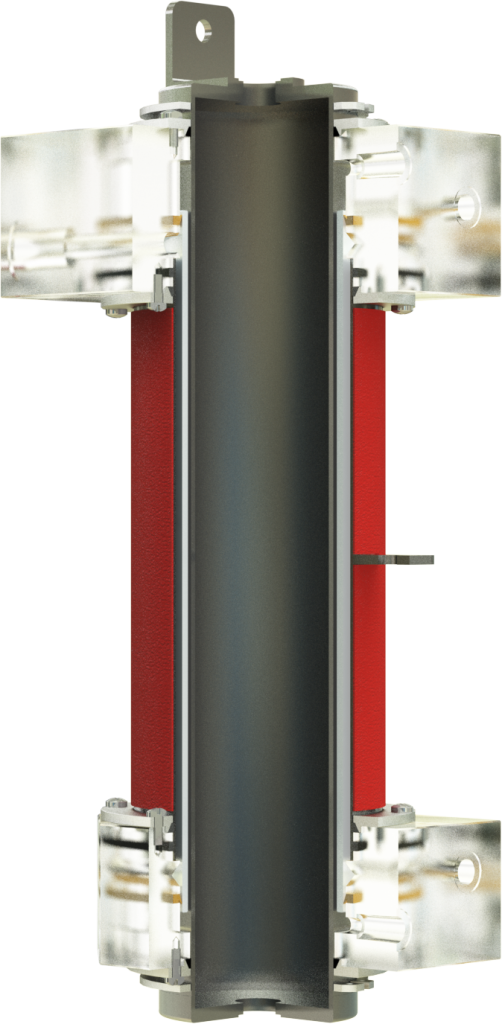
Unique and Innovative
- It has been established by the National Industrial Fuel Efficiency Service Ltd. (NIFES), Scotland, UK through patent search that design of the Envirolyte diaphragmatic cells is unique and innovative.
Easy Handling
- The Envirolyte diaphragmatic cell is a round-shaped electrolyser, constructed of titanium and rare metals. The electrodes are separated by a polymer or ceramic diaphragm. Even under severe conditions hardly any element of the cell can be broken.
Small Size – High Capacity
- With portable size of all Envirolyte cells they have production capacity varying from 20l up to 1200l of anolyte per hour. So with only one unit up to 20 – 1200 m3/h of water can be effectively disinfected or up to 1200 l/h of Anolyte directly dispensed.
Valuable By-Product
- The production of Catolyte (if needed) by the diaphragmatic cells is a valuable addition to the synthesis of the activated solutions that can be used for washing or whenever it is necessary to increase pH of the treated water.
Envirolyte Units
- Universal diaphragmatic cell for treatment of diluted and concentrated aqueous solutions, the heart of any Envirolyte unit.
Diaphragmatic Cell Performance
In addition to the principal electro-chemical reaction that takes place at the electrodes, the high intensity of the electrical field at the electrode surface imparts a degree of electro-meta-stability to the water and its dissolved salts, increasing its ORP in the order of -800mv and + 1200mv respectively in the two streams.
This meta-stable condition has been found to remain for periods up to 72 hours after treatment and even more, retaining an inherently higher chemical reactivity and activity for this period of time and even longer (when activated solutions are properly stored they remain sporicidal for up to 6 months and still biocide for up to 18 months). The increased ORP enhances the solubility, dispersive and reactive properties of the water and its dissolved salts by a marked degree and is a significant indicator of biocide potential.
Properties of these solutions depend on electric characteristics of power supply and chemical composition of the treated solutions. The pH level of the solutions synthesised is controlled in the range pH 2.0-13.0, but is adjustable and can be set-up for specific parameters.
